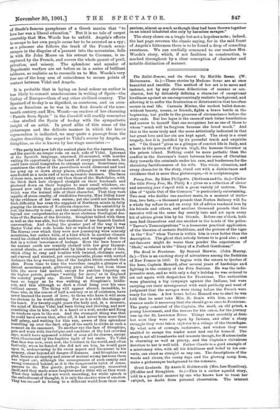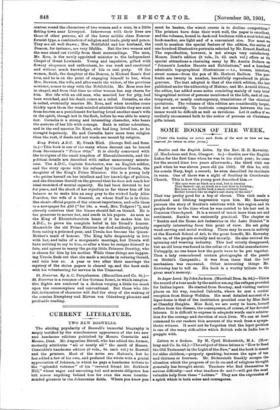Great Lowlands. By Annie E. Holdsworth (Mrs. Lee•Hamilton). (Hodder and
Stoughton. 6s.)—This is a rather squalid story. told in a powerful manner by one who knows how to treat her subject, no doubt from personal observation. The interest
centres round the characters of two women and a man, in a little fishing town near Liverpool. Interwoven with their lives are those of other persons, all of the lower middle class Noncon- formist type, a combination of religion and trade, piety and pence. They are all well drawn ; Mrs. Nettlefold and her husband, the Deacon, for instance, are very lifelike. But the two women and the man stand out vividly from their surroundings. The man, Mr. Ross, is the newly appointed minister to the Independent Chapel of Great Lowlands. Young and impulsive, gifted with flowery eloquence and enthusiasm, he was weak and emotional and without much knowledge of life or real piety. Of the women, Ruth, the daughter of the Deacon, is Michael Ross's first love, and he is on the point of engaging himself to her, when Mrs. Dawson, the wife, and afterwards the widow, of the previous minister, comes to stay with the Nettlefolds. Mr. Ross sees her in chapel, and from that time no other woman has any charm for him. Her life with an old man, who married her for pity, had been wretched, and his death comes as a relief. Cornelia, as she is called, eventually marries Mr. Ross, and when troubles come thickly upon them the weak-minded minister thinks they are sent from heaven as a punishment for having loved another man's wife in the spirit, though not in the flesh, before he was able to marry her. Cornelia is a strong and interesting character, who bears the sorrows of her life with courage. Ruth is rather colourless, and in the end marries Dr. Kent, who had long loved her, as he thought hopelessly. He and Cornelia have more true religion than the rest, if deeds and not words are meant by religion.















































 Previous page
Previous page